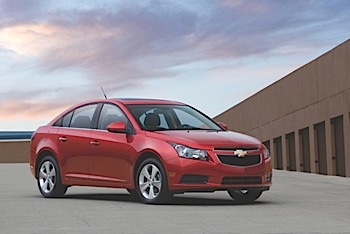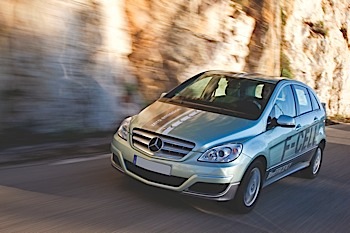 The auto industry won’t be producing vehicles in the near future that encompass the options of the flying “Spinner” cars portrayed in 1982’s Blade Runner, however, the reality is that we will soon be seeing something more like the “Johnny Cabs” that hailed from the 1990’s film Total Recall.
The auto industry won’t be producing vehicles in the near future that encompass the options of the flying “Spinner” cars portrayed in 1982’s Blade Runner, however, the reality is that we will soon be seeing something more like the “Johnny Cabs” that hailed from the 1990’s film Total Recall.
In March of last year, the Nevada Department of Motor Vehicles issued a license for a self-driven car, and in late September 2012, California’s Gov. Jerry Brown, at a ceremony at Google’s headquarters in Mountain View, signed into law a bill that his state’s Department of Motor Vehicles is to write regulations covering robot cars by January 2015. The law also has paved the road to allow autonomous vehicles to operate on California roads.
“I expect that self-driving cars are going to be far safer than human-driven cars,” said Google co-founder Sergey Brin. “Self-driving cars do not run red lights.”
Autonomous Autos
There is a lot of speculation on how these driverless vehicles will impact the automotive service industry.
For one thing, it’s going to take technicians like you to become even more skilled in computers and electronics to service these vehicle systems.
Bob Lutz, former GM vice chairman and idea man behind the Chevy Volt, said recently that he expects mass-produced driverless vehicles on the roads within 20 years and that the technology to operate such vehicles is already available.
Lutz cited “smart systems” like start-stop technology, lane departure warning systems, adaptive cruise control and GPS guidance — designs currently used in some of today’s high-end vehicles — will be combined by engineers to produce the hands-free cars.
Together, these advancements are designed to keep the vehicle in its lane and at a safe distance from the car in front of it. The car will also apply the brakes to avoid a collision, even when a car driving 30 miles slower suddenly pulls in front of it.
Lutz thinks this is a great idea, since “cars don’t smoke pot or drink,” and thereby the nation will see a reduction in driver-impaired accidents.
However, the vehicles could be bad news for collision shops, as fewer accidents transforms into less work for collision shops. Insurance costs also could decline.
While the expected safety improvements are beneficial, the aftermarket may see more miles per vehicle increase, as the technology will allow more people such as the elderly and those who do not like to drive in traffic the opportunity for more travel.
Vehicles also could be programmed to arrive at your shop for service or maintenance even without a passenger. Let’s just hope the “smart car” doesn’t forget the credit card to pay for the work.
More Diesels Heading Down the Pipeline
You also can bet on seeing more diesels in your workplace — whether it’s a dealership or independent repair shop. 
When the Obama Administration announced tougher fuel economy standards for vehicles last August, much of the focus surrounded gasoline-powered cars and trucks.
But for Allen Schaeffer, executive director for the Diesel Technology Forum (www.dieselforum.org), these requirements will increase the growing popularity of diesel vehicles in the U.S., something he is excited about.
“Because clean diesel autos are 20% to 40% more efficient than gasoline vehicles, diesel will be a major player in the nation’s effort to achieve the new mileage standards.”
Schaeffer said this is good news to manufacturers and suppliers of clean diesel technology who will “play an expanded role in improving fuel economy of the fleet needed to achieve the 54.5 mpg level by 2025 as mandated by the new greenhouse gas and fuel efficiency standards.”
The result will be an increase in diesel service opportunities. It may be a good idea to look toward becoming ASE-certified in diesel engine diagnostics.
In fact, in the first six months of 2012, clean diesel automobile sales in the U.S. increased 27.5%, according to sales information compiled by HybridCars.com and Baum and Associates.
While clean diesel auto and light truck sales total only about 3% of the total U.S. passenger car and small truck market, the steady double-digit monthly sales increases show a definite trend of interest in diesels.
A recent Pike Research study forecasts that sales of these light-duty clean diesel vehicles will increase from 282,000 vehicles i-n 2012 to 928,000 by 2018.
While current Clean Diesel vehicles include pick-up trucks from the domestic automakers, diesel cars from the European manufacturers include the Audi A3 and Q7 TDI models, BMW 335D and X5 xDrive35d, Mercedes-Benz E350, ML350, GL350 and R350 BlueTEC diesels, and VW Beetle, Golf, Jetta, Passat and Touareg TDI models.
New vehicles with diesel engines introduced into the U.S. market in the next two years include Chrysler’s Jeep Grand Cherokee Ecodiesel in 2014, along with a new version of the discontinued Dakota pickup that will include a diesel.
Ford will offer a new diesel Transit full-size commercial van this year, as will GM with a Cadillac ATS diesel and a diesel version of the Chevrolet Cruze. Mazda will become the only Asian car manufacturer to sell diesel cars in the U.S. when it introduces its SKYACTIV-D 2.2L clean diesel engine next year.
Selling the Fuel-Cell Concept
Over the past few years, the automotive industry has focused on plug-in electric vehicles and various gasoline- and diesel-electric hybrid designs; but now, electric fuel-cell vehicles are returning to the spotlight.
 Recently, a collaborative partnership approach between Daimler, Ford and Renault-Nissan was announced in an effort to begin mass producing hydrogen-fueled fuel-cell electric vehicles (FCEVs) in the next four years.
Recently, a collaborative partnership approach between Daimler, Ford and Renault-Nissan was announced in an effort to begin mass producing hydrogen-fueled fuel-cell electric vehicles (FCEVs) in the next four years.
The benefit of these zero-emissions vehicles is their potential to reduce pollution and cut down on the world’s reliance on oil for transportation. However, the drawback over the years has been cost. The automakers believe that combining resources could help alleviate the largest challenge for such vehicles — a fueling infrastructure.
Powered by electricity generated from hydrogen and oxygen, FCEVs emit only water while driving. FCEVs are considered complementary to today’s battery-electric vehicles and will help expand the range of zero-emission transportation options available to consumers.
While each vehicle is expected to use the same electric core design and components, models will still be unique to each automaker. This allows manufacturers to offer different body styles, cabin designs and branding to buyers.
But the concept of sharing fuel-cell core platforms and components would also be helpful for repair shops in the future, as diagnostic tools used to service these vehicles could also be shared, instead of technicians purchasing tooling for individual manufacturers.
While FCEV technology has been in the development stage for a number of automakers including General Motors and Toyota since the late 1990s, the implementation of a consumer vehicle hasn’t taken off due to the high costs of development, design and patents. Hydrogen fueling stations have been introduced in the U.S., but are mainly concentrated around FCEV testing areas out West.
Under the alliance agreement from Daimler, Ford and Nissan, each company will invest equally in the technology. The cars could be available as early as 2017.
According to a release from the alliance, “The collaboration sends a clear signal to suppliers, policymakers and the industry to encourage further development of hydrogen refueling stations and other infrastructure necessary to allow the vehicles to be mass-marketed.”


